Biometrics for animals
La reconnaissance des animaux
Biometrics can also apply to animals:
- Some animals have fingerprints, mainly primates, but also koalas.
- We can recognize animals using different biological traits.
See also the commercial applications, devices you can buy for your pets.
Animals with fingerprints
Primates
- Not only humans have fingerprints, as you can guess, that's the case for primates (chimpanzee...)
- The Spider Monkey has some kind of fingerprints also on the tail.

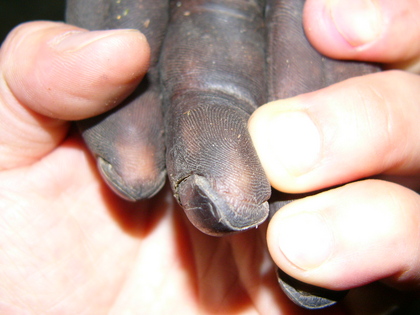
Koalas
- As shown by Henneberg & als (dead link) from the Department of Anatomical Sciences, University of Adelaide, koalas have fingerprints.

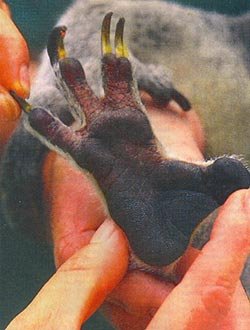

Animals without fingerprints
Some recognition systems specifically designed for animals !
Penguin Recognition project
(since 2004) Spot the penguins / Bristol university / Penguin-Recognition Software
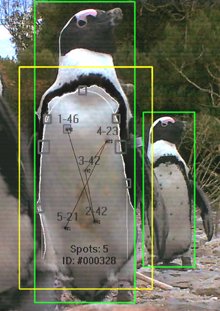
Robben Island is home to roughly 20,000 African penguins, a threatened species that has declined by 90 percent in the past century. Software picks up the penguins' fingerprint-like patterns of black and white feathers, and uses these patterns to identify individual animals.
Fisher footprints
- (2007) Using Patterns in Track-Plate Footprints to Identify Individual Fishers / Herzog & als. (dead link)
Track plates capture fine detail in the footprints of fishers (Martes pennanti), recording rows of dots corresponding to tiny papillae on the animal’s metacarpal pad. We show that the pattern of these dots can be used to identify individual fishers, similar to human fingerprints.
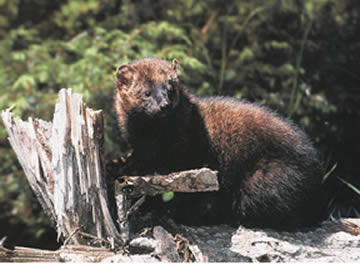

Zebra stripes
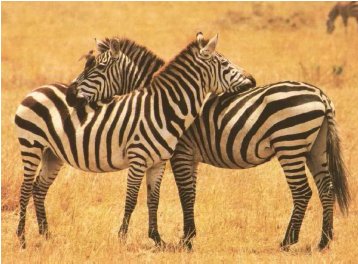
(2002) Individual Zebra Identification / Hans Krijger. Mainly based on binarization and skeletonization.

Conservation Research stripe patterns of Grevy's zebra
Cattle noseprint

(1921) The identification of bovine by means of nose-prints / Petersen.
- Not automated, but well, noseprint can be used for identification (image from Identification of Beef Animals)
- (1975) Solis and Maala, from the University of the Philippines, were the first to characterize the nose printing process in 1975. They realized that identification methods such as branding, tattooing, ear tagging, and ear notching were flawed in that the identifier could be replicated, replaced, or modified, and thus they chose muzzle printing as an alternative. Their findings concluded that nose prints were unique among animals, and the process was a suitable method for identification (Solis & Maala, 1975).

- An Evaluation of Retinal Imaging Technology for 4-H Beef and Sheep Identification: The study evaluated retinal imaging technology as a means of permanent identification of 4-H beef and sheep. The OptiReader» Device was used to capture digital images of 491 beef and 220 sheep during 4-H enrollment. A total of 317 beef and 159 sheep were re-imaged. The on-site visual verification rate was 96.2% for beef and 100% for sheep. A visual verification exercise showed that individuals could identify a pair of retinal images as a match 98.6 % of the time for beef. Retinal imaging is a viable method for enrolling beef and sheep.
Conservation Research Ldt
Tiger stripes

(2009 Mar)Conservation Research Ldt has developped a software that allows tiger researchers to rapidly identify individual animals by creating a three-dimensional model using photos taken by remote cameras.
Cheetah spot pattern

Whale Shark pelage pattern
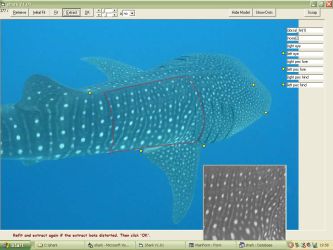
Harbour Seal pelage pattern

Salamander dorsale surface

Chital spot pattern
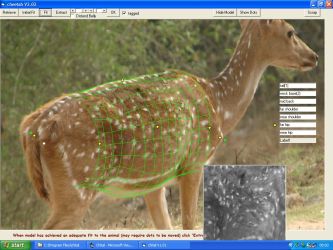
Sand Lizard

Crested Newt
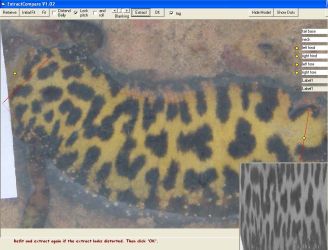
Wildebeest
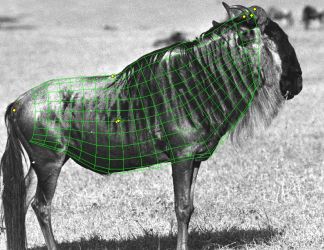
Great White Shark

White Shark Trust website see research -> photographic identification
Salmon
See also Biometric Animals from Manfred Bromba.
(2017) A book: Animal Biometrics / Santosh Kumar, Sanjay Kumar Singh, Rishav Singh, Amit Kumar Singh.